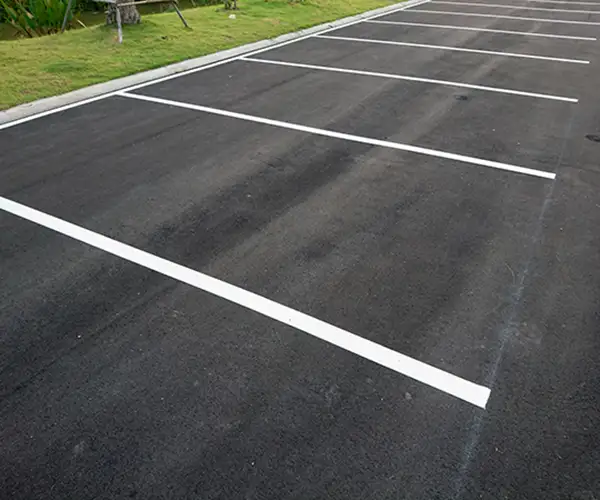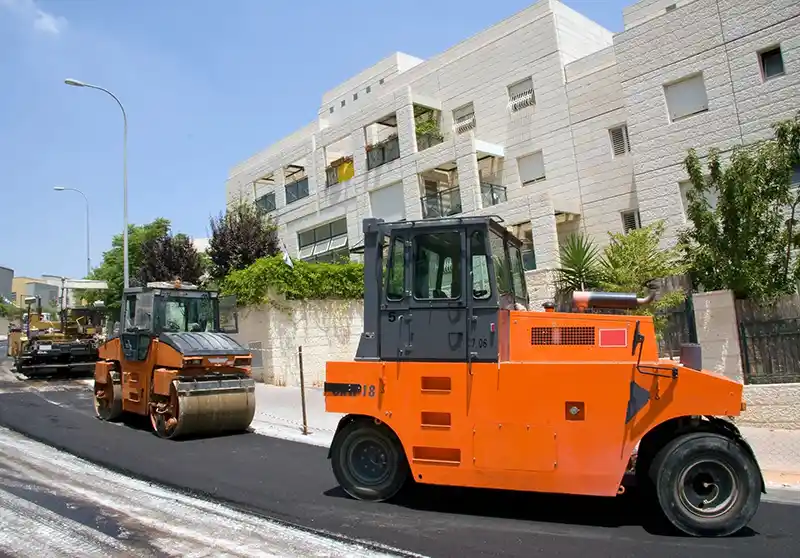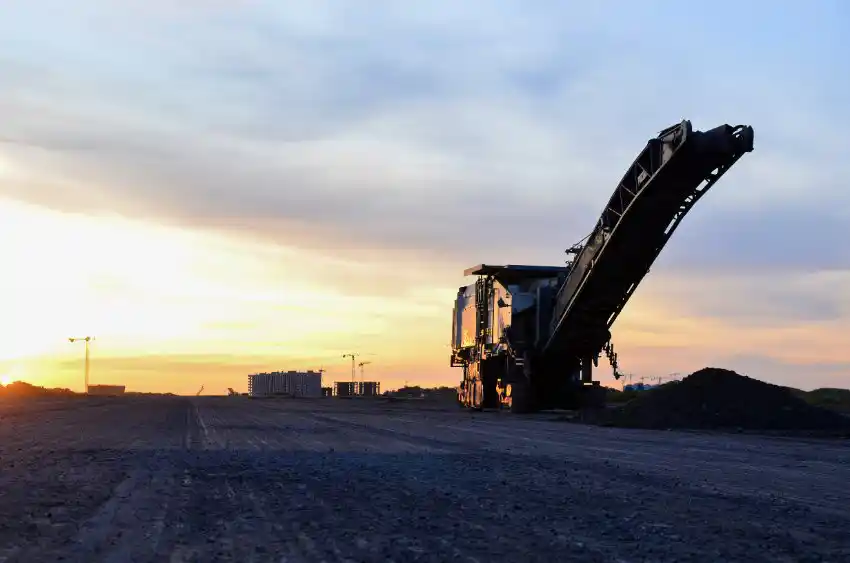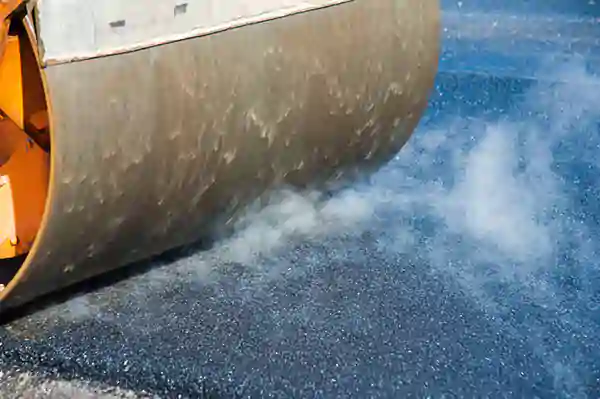Parking Lot Paving
Premier Commercial Parking Lot Paving Company
Commercial Parking Lot Paving
At Top Grade Paving, we understand that the foundation of a great property begins right at the parking lot. As a leading provider of top-quality asphalt paving services, we take pride in delivering durable, aesthetically pleasing, and high-performing parking lots that elevate the curb appeal and functionality of your property.
Asphalt stands as the gold standard for parking lot surfacing, offering an array of benefits that make it the top choice for property owners and managers. Its durability, cost-effectiveness, and smooth finish make it a superior material for enduring heavy traffic, harsh weather conditions, and daily wear and tear, all while maintaining a polished appearance.
Asphalt Parking Lot Installation Process
Parking lot paving involves several steps to ensure a durable, smooth, and long-lasting surface. Here’s an overview of the typical process:
Step 1. Planning and Design:
- Site Evaluation: Assess the area for proper drainage, soil stability, and any existing issues that might affect the pavement.
- Design Layout: Determine the layout, including parking spaces, lanes, and any additional features like curbs, islands, or sidewalks.
Step 2. Clearing and Grading:
- Site Preparation: Clear the area of debris, vegetation, and any obstacles that might hinder construction.
- Grading: Level the surface and ensure proper slope for water drainage, using heavy machinery like bulldozers and graders.
Step 3. Sub-Base Preparation:
- Subgrade Preparation: Ensure a stable foundation by compacting the soil to create a solid base.
- Aggregate Base Installation: Lay and compact crushed stone or gravel to create a stable and supportive base layer.
Step 4. Installation of Base and Binder Course:
- Installation of Base Layer: Apply a layer of coarse asphalt mix (base course) and compact it thoroughly.
- Binder Course: Apply a slightly finer asphalt mix (binder course) over the base layer, providing strength and stability.
Step 5. Surface Asphalt Application:
- Asphalt Surface Layer: Apply the final layer of finer asphalt mix (surface course) using paving machines, ensuring proper thickness and smoothness.
- Compaction: Compact the surface layer thoroughly to achieve density and strength.
Step 6. Finishing Touches:
- Edge and Joint Sealing: Seal edges and joints to prevent water penetration and maintain structural integrity.
- Line Striping and Markings: Apply parking lot striping, symbols, and directional markings for organized parking and traffic flow.
Step 7. Curing and Maintenance:
- Curing Period: Allow time for the asphalt to cure and set properly before opening it to traffic.
- Regular Maintenance: Implement a maintenance plan including seal coating, crack filling, and periodic inspections to extend the lifespan of the parking lot.
Step 8. Parking Lot Paving Quality Assurance:
- Quality Check: Conduct quality inspections to ensure the surface meets industry standards for smoothness, thickness, and durability.
- Customer Inspection: Involve the client in a final inspection to ensure satisfaction and address any concerns.
Each step in the installation process requires expertise, proper equipment, and attention to detail to ensure a high-quality asphalt parking lot that meets both functional and aesthetic requirements. Consulting with experienced professionals is crucial to achieving a successful outcome for your new asphalt parking lot paving project.
Parking Lot Overlays
An asphalt overlay refers to a method used in pavement maintenance where a new layer of asphalt is applied over an existing asphalt surface. This technique is commonly employed to rejuvenate aging or deteriorating pavements without completely reconstructing the entire pavement structure. It can significantly extend the life of the pavement and restore its functionality and appearance. Read on to learn more about this budget friendly option.
Asphalt Overlay Process
- Assessment and Preparation:
- Inspection: Evaluate the condition of the existing asphalt pavement to determine if an overlay is a suitable option.
- Repair: Address any structural issues, cracks, or potholes in the existing pavement before applying the overlay.
- Cleaning and Surface Preparation:
- Cleaning: Thoroughly clean the existing pavement to remove debris, dirt, and loose materials.
- Repair Work: Perform any necessary repairs to the pavement surface, such as crack filling or patching.
- Application of Tack Coat:
- Apply a tack coat or bonding agent over the existing pavement surface to ensure proper adhesion between the old and new asphalt layers.
- Overlay Installation:
- Asphalt Layer: Lay a new layer of asphalt mix (usually around 1.5 to 2 inches thick) using paving equipment over the existing pavement.
- Compaction: Compact the newly applied asphalt layer to achieve proper density and smoothness.
- Finishing and Curing:
- Rolling and Finishing: Use rollers to further compact the overlay and achieve a smooth, uniform surface.
- Curing Time: Allow the newly overlaid surface to cure properly before allowing traffic, ensuring it sets and adheres well.
Advantages of Asphalt Overlay:
- Cost-Effective: Overlaying is often more cost-effective than completely reconstructing a pavement.
- Time-Saving: It requires less time compared to a full reconstruction, minimizing disruption to traffic and businesses.
- Improves Appearance: Enhances the appearance of the pavement, giving it a fresh, smooth surface.
- Restores Functionality: Restores ride quality and functionality of the pavement, addressing minor surface issues.
Considerations:
- Structural Integrity: An overlay is suitable for surfaces with minimal structural damage.
- Proper Surface Preparation: Proper cleaning and repair of the existing pavement are crucial for the success of the overlay.
- Thickness and Material Quality: The thickness and quality of the new asphalt layer should be appropriate to ensure durability.
An asphalt overlay is a cost-effective solution for rejuvenating and extending the life of existing pavements, provided that the underlying structure is in good condition and suitable for overlay application. Consulting with pavement experts can help determine whether an overlay is the right solution for a particular pavement condition.
Get A Quote Today
Don’t start your project before getting a free quote from Top Grade Paving. We have the best prices and guarantee 100% customer satisfaction!




